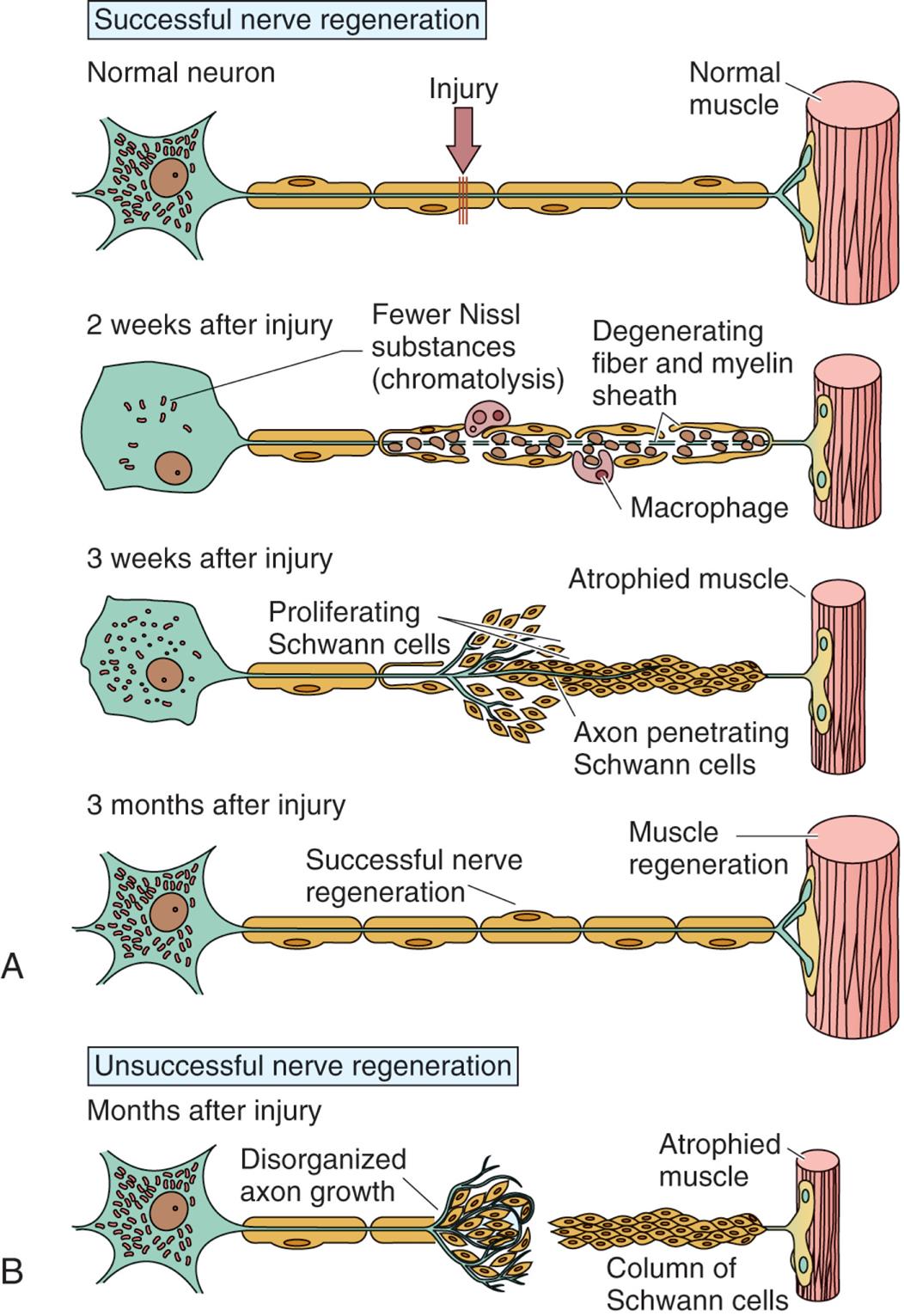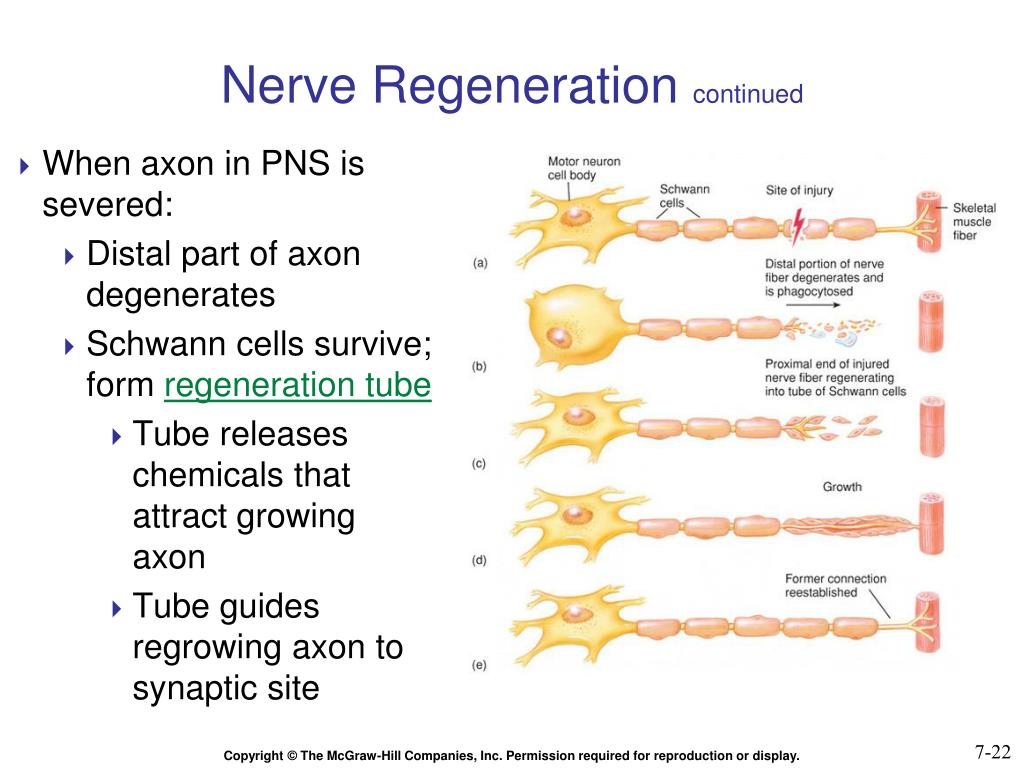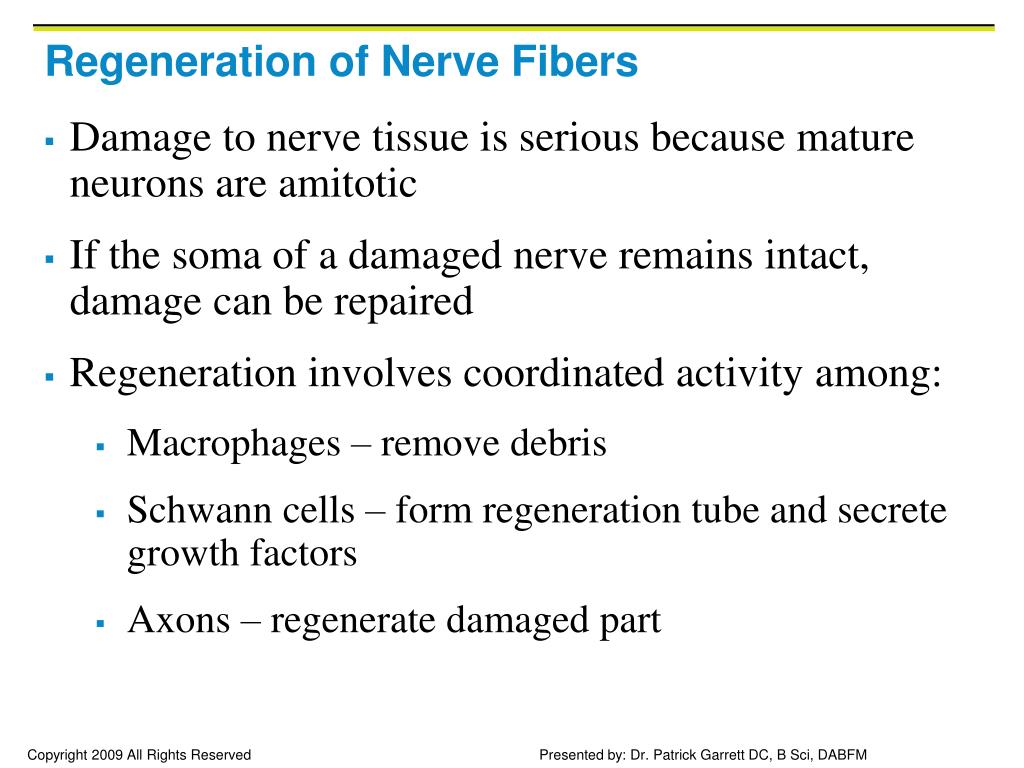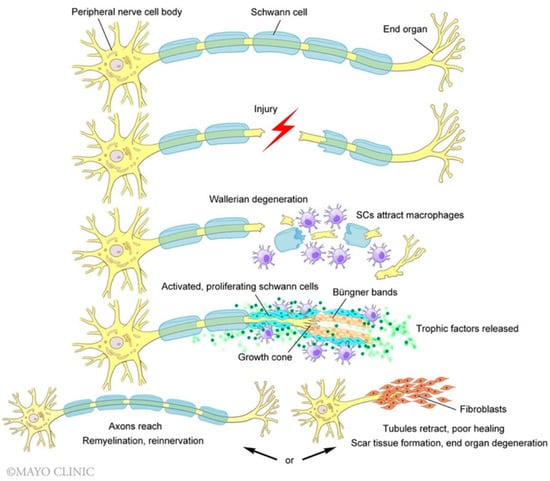Which Of The Following Is Required For Nerve Fiber Regeneration
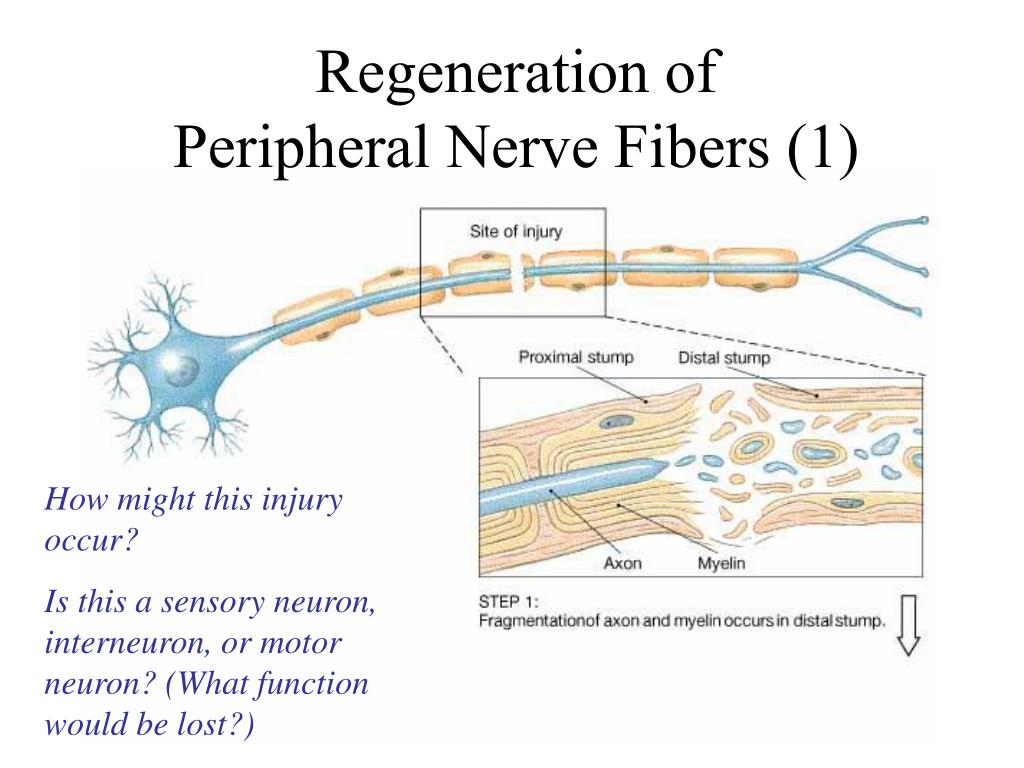
The intricate process of nerve fiber regeneration, a beacon of hope for those suffering from nerve damage due to injury or disease, is drawing increasing attention in the scientific community. Researchers are intensely focused on identifying the key elements that are absolutely necessary for this complex biological process to occur.
While the exact requirements are multifaceted and still under investigation, a few critical components have emerged as vital. Understanding these fundamental elements – including a supportive cellular environment, appropriate growth factors, and the presence of specific guidance cues – is crucial for developing effective regenerative therapies.
The Foundation: A Supportive Cellular Environment
Nerve fiber regeneration does not occur in a vacuum. It relies heavily on the presence of a conducive cellular environment, primarily provided by Schwann cells, the glial cells responsible for myelinating peripheral nerves. These cells play a crucial role in clearing debris from the site of injury, providing structural support for the regenerating nerve fiber, and secreting growth factors.
The role of Schwann cells extends far beyond mere scaffolding. According to a study published in the journal Neuron, they also modulate the inflammatory response following nerve injury, creating an environment that promotes rather than inhibits regeneration.
The Importance of Growth Factors
Growth factors, such as nerve growth factor (NGF), brain-derived neurotrophic factor (BDNF), and glial cell line-derived neurotrophic factor (GDNF), are signaling molecules that promote the survival, growth, and differentiation of neurons. These factors are essential for nerve fiber regeneration because they provide the necessary chemical signals to stimulate axonal sprouting and elongation.
A 2022 report by the National Institutes of Health (NIH) emphasized that the targeted delivery of these growth factors to the site of nerve injury can significantly enhance regeneration. Researchers are actively exploring various delivery methods, including gene therapy and biomaterial scaffolds, to optimize the efficacy of these growth factors.
Guidance Cues: Steering the Regenerating Axon
Regenerating nerve fibers must navigate through the complex environment of the injured tissue to reach their original targets. This navigation process depends on the presence of guidance cues, which are molecules that attract or repel the growing axon, directing it along the correct path.
These cues include netrins, slits, and ephrins, all of which play distinct roles in axonal guidance. The disruption of these cues can lead to aberrant nerve regeneration and functional deficits. The Journal of Neuroscience published a paper highlighting how manipulating these cues can improve the accuracy of nerve regeneration and functional recovery.
Beyond the Basics: A Complex Interplay
While a supportive cellular environment, growth factors, and guidance cues are undoubtedly critical, successful nerve fiber regeneration is more complex than simply providing these elements. The timing and dosage of each factor, as well as the interaction between them, are also crucial considerations.
For example, an excessive inflammatory response can counteract the benefits of growth factors, while a lack of appropriate guidance cues can lead to the regeneration of axons to the wrong targets. Furthermore, the age and health of the individual, as well as the severity and type of nerve injury, can all influence the regenerative capacity of the nerve.
Future Directions and Potential Impact
Research into nerve fiber regeneration is rapidly advancing, with new discoveries being made on a regular basis. Scientists are exploring novel approaches to enhance regeneration, including the use of stem cells, gene editing, and advanced biomaterials. The ultimate goal is to develop effective therapies that can restore function to individuals suffering from nerve damage.
The potential impact of these therapies is enormous. Nerve damage can result from a wide range of conditions, including traumatic injuries, diabetes, and neurodegenerative diseases. Successful nerve fiber regeneration could significantly improve the quality of life for millions of people worldwide. The World Health Organization (WHO) identifies peripheral nerve injuries as a major cause of disability globally, underscoring the urgent need for effective treatments.
Ultimately, identifying and manipulating the core requirements for nerve fiber regeneration promises a new era in the treatment of nerve injuries and related debilitating conditions, offering a path towards restoring mobility, sensation, and overall well-being.This area of research is not only promising but essential for improving the lives of individuals with nerve damage.

